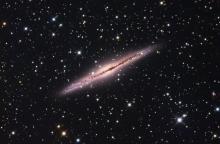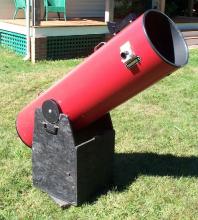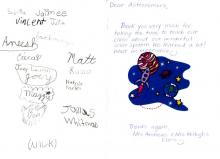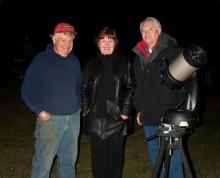Don't miss the meeting, coming up this week!
Feed aggregator
Under pressure -- space exploration in our time
A new paradigm is taking shape in the space industry as the countries and entities accessing space continue to grow and diversify. This dynamic landscape creates both competition and potential for scientific collaboration, as well as the challenges and opportunities of progress.
Evidence of geothermal activity within icy dwarf planets
A team found evidence for hydrothermal or metamorphic activity within the icy dwarf planets Eris and Makemake, located in the Kuiper Belt. Methane detected on their surfaces has the tell-tale signs of warm or even hot geochemistry in their rocky cores, which is markedly different than the signature of methane from a comet.
Diverse ancient volcanoes on Mars discovered by planetary scientist may hold clues to pre-plate tectonic activity on Earth
A geologist has revealed intriguing insights into the volcanic activity on Mars. He proposes that Mars has significantly more diverse volcanism than previously realized, driven by an early form of crust recycling called vertical tectonics. The findings shed light on the ancient crust of Mars and its potential implications for understanding early crustal recycling on both Mars and Earth.
A star like a Matryoshka doll: New theory for gravastars
If gravitational condensate stars (or gravastars) actually existed, they would look similar to black holes to a distant observer. Two theoretical physicists have now found a new solution to Albert Einstein's theory of general relativity, according to which gravitational stars could be structured like a Russian matryoshka doll, with one gravastar located inside another.
Mysterious gap in size distribution of super-earths explained
Astronomers have uncovered evidence of how the enigmatic gap in the size distribution of exoplanets at around two Earth radii emerges. Their computer simulations demonstrate that the migration of icy, so-called sub-Neptunes into the inner regions of their planetary systems could account for this phenomenon. As they draw closer to the central star, evaporating water ice forms an atmosphere that makes the planets appear larger than in their frozen state. Simultaneously, smaller rocky planets gradually lose a portion of their original gaseous envelope, causing their measured radius to shrink over time.
Mimas' surprise: Tiny moon of Saturn holds young ocean beneath icy shell
Saturn's moon Mimas harbors a global ocean beneath its icy shell, discovered through analysis of its orbit by Cassini spacecraft data. This ocean formed just 5-15 million years ago, making Mimas a prime candidate for studying early ocean formation and potential for life. This discovery suggests life-essential conditions might exist on seemingly inactive moons, expanding our search for life beyond Earth.
A long, long time ago in a galaxy not so far away
Employing massive data sets collected through NASA's James Webb Space Telescope, astronomers are unearthing clues to conditions existing in the early universe. The team has catalogued the ages of stars in the Wolf--Lundmark--Melotte (WLM) galaxy, constructing the most detailed picture of it yet, according to the researchers. WLM, a neighbor of the Milky Way, is an active center of star formation that includes ancient stars formed 13 billion years ago.
Newly discovered carbon monoxide-runaway gap can help identify habitable exoplanets
A carbon monoxide (CO)-runaway gap identified in the atmospheres of Earth-like planets can help expand the search for habitable planets. This gap, identified through atmospheric modeling, is an indicator of a CO-rich atmosphere on Earth-like planets orbiting Sun-like stars. CO is an important compound for the formation of prebiotic organic compounds, which are building blocks for more complex molecules for the formation of life.
Which came first: Black holes or galaxies?
Black holes not only existed at the dawn of time, they birthed new stars and supercharged galaxy formation, a new analysis of James Webb Space Telescope data suggests.





















